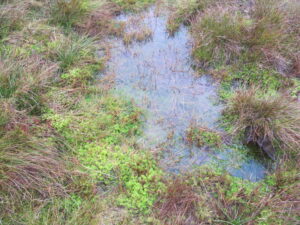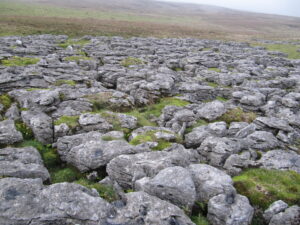Why are some peatlands resilient to climate change and others not?
Overview
Peatlands are the largest global store of terrestrial organic carbon (C), containing approximately 600 gigatonnes of C. However, drainage of peatlands for conversion to forestry and agriculture, and for peat extraction, has led to them becoming sources of atmospheric C through peat oxidation and fire. Drained peatlands emit the equivalent of 1-2 billion tonnes of CO2 annually, which represents 2-4% of all human-related greenhouse gas emissions. In the UK, blanket peatlands have been extensively drained. In July 2020, the Scottish Government pledged to invest over £220 million in peatland (mainly blanket peatland) restoration over the next 10 years; and in August 2023 the UK Government, through Defra, committed £16 million to restore 12 English peatland sites, of which five are blanket peatlands. As well as drainage, climate change also poses a threat to the UK blanket peatland C stock. Statistical models predict that virtually all of the UK’s blanket peatland will be outside of its bioclimatic envelope within 50-75 years. However, some blanket peatlands have formed in naturally well-drained locations where existing scientific understanding would not predict their existence. The presence of such apparently resilient sites may suggest that not all blanket peatlands will become unstable as the climate changes.
The study area
The project will focus on blanket peatlands in the Yorkshire Dales National Park, where past artificial drainage has led to large areas of degraded and dry blanket bog. However, within a few 100 m of such degraded sites there are some remarkable examples of healthy blanket bog. Patches of blanket bog of a hectare or more exist on a ‘bed’ of loess or possibly glacial till which in turn sits on limestone. The loess very likely restricts downward water loss from the peat, and would, therefore, have been instrumental in making conditions wet enough for the patches of bog to initiate. However, the margins of the patches occur close to well-drained limestone pavement but remain wet and healthy. In addition, the underlying limestone is prone to collapse, and sink holes form within the bogs. These might be expected to act as large drains and cause the peat around them to dry out and oxidise, but often the bog – even within a few metres of the holes – is in good condition, with Sphagnum and shallow pools present. The key question is why do healthy and degraded peatlands co-exist in such close proximity? The fact that the healthy peatlands are able to maintain near-surface water tables despite the presence of drainage features may mean such bogs will be resilient in the face of climate change and future increases in drought frequency and intensity.
Research Questions and Approach
This project seeks to identify the causes of variations in blanket peatland condition, with the aim of improving models of peatland response to climate change.
The problem will be investigated in three ways: 1) detailed site surveys using drones, ground-penetrating radar, and peat coring will be used to build 3-D ‘models’ of the degraded and healthy peatlands as they currently exist. These models will be combined with measurements of key peat physical properties and hydrological monitoring of the sites, which will take place over 18 months (to include two summers); 2) peat cores will also be taken for palaeo-ecological analysis to reconstruct the past development of the peatlands; and 3) finally, the development of the peatland will be simulated with the DigiBog peatland model and run into the future to gauge how the two sites will respond to predicted climate change. The model will also be used to explore how different types of land management may be employed to mitigate future climatic drying of the degraded site.
Outcomes
The project will yield three papers, targeted for leading international journals, which the student will write under the guidance of the supervisors: one on the current hydrological behaviour of the sites (site survey and hydrological data), one on the palaeo-ecological development of the two sites, and one on the DigiBog modelling. The improved understanding of blanket peat resilience that this project will develop may also help to inform current and ongoing restoration programmes.
The images below show (left) a bog pool at the margin of a blanket peatland in the Yorkshire Dales, and (right) a blanket peatland (distant) abutting limestone pavement (foreground).


